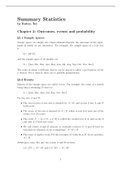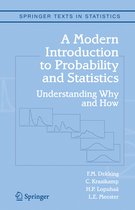Summary
[BSc TN] Summary A Modern Introduction to Probability and Statistics
- Course
- Institution
- Book
--- Satisfied? Please don't forget to leave a rating! --- Summary of "A Modern Introduction to Probability and Statistics". This summary covers all important formulas and terminology for statistics and probability, specifically all what is covered in the the course "WI3104TN - Statistiek TN" giv...
[Show more]





